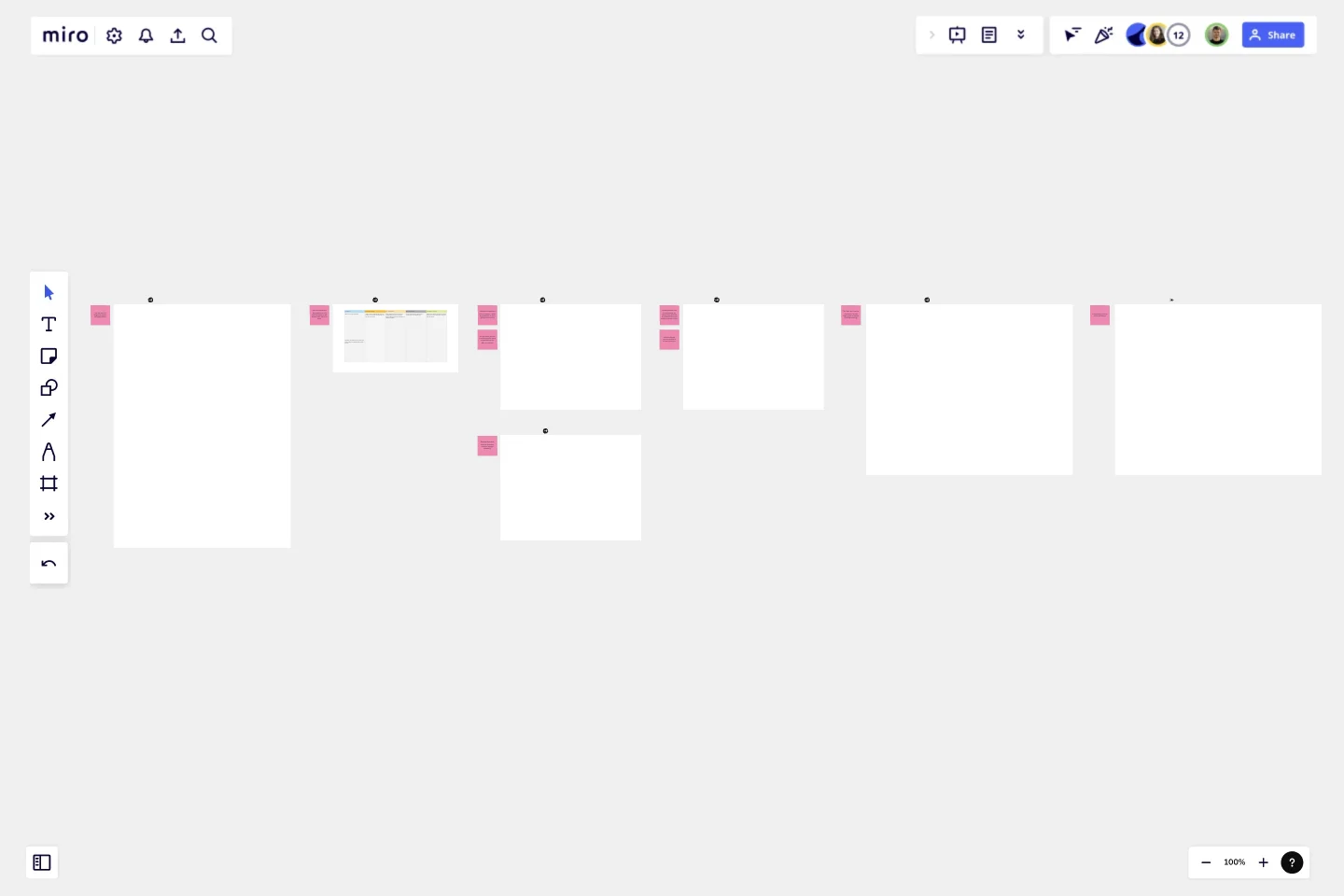Analytics Storyboard
Data visualization product designers / architects.
Audience: Data visualization product designers / architects
Purpose: To facilitate the creation of a storyboard for data visualization that results in a product aligned to what your audience finds compelling and useful.
How to use it: Facilitate workshops with your audience and build consensus for the data product's purpose. Sketch out a design before using your visualization tool of choice to ensure effort isn't wasted on delivering against an ever-moving finish line.
This template was created by Ilija Stojic.
Get started with this template right now.
User Empathy Map
Works best for:
Market Research, Research & Design
User Empathy Map template helps you visualize user experiences and needs. It’s an essential tool for teams looking to design products that resonate with their users. Use this template to build empathy and improve user satisfaction.
Storyboard for Game Design Template
Works best for:
Storyboard
The Storyboard for Game Design template is a structured tool for visualizing your game’s development from concept to execution. It includes sections for roles, storyboarding, scripting, and asset management, ensuring clarity, consistency, and alignment across the team. Ideal for game designers, this template streamlines planning, helps manage resources, and promotes a cohesive and engaging gaming experience.
Root Cause Evaluation Template
When you first encounter a complex situation, it's not common to immediately delve into its underlying causes and effects. Often, we grasp the overall picture but fail to separate the problem from its surrounding circumstances. Root Cause Evaluation provides a method to better understand the interconnected factors that have contributed to the current situation.
Storyboard for Educational Purposes Template
Works best for:
Storyboard
The Storyboard for Educational Purposes template streamlines course creation by organizing content into scripts, screen text, and production notes. This template fosters collaboration among instructional designers and stakeholders, ensuring effective and engaging training modules. Perfect for educators and trainers, it enhances clarity, collects feedback, and improves overall learning outcomes by making content creation systematic and transparent.
Agile Kata Storyboard
Works best for:
Storyboard, Design, Planning
Optimize your Agile processes with the Agile Kata Storyboard template. This template is ideal for Agile teams looking to improve their workflows and problem-solving techniques. It helps you visualize the steps of the Agile Kata, including problem identification, solution brainstorming, and iterative testing. Use this template to facilitate continuous improvement, enhance team collaboration, and ensure your Agile practices are effective and efficient.
Storyboards by maad labs
Works best for:
Storyboard, Planning, Design
Simplify your story creation process with Storyboards by maad labs. This template offers a user-friendly interface for mapping out your narrative projects, making it ideal for both beginners and seasoned professionals. It includes sections for scene descriptions, character notes, and dialogue, helping you to organize your ideas and present them clearly. Use this template to enhance your storytelling workflow and bring your creative visions to life with ease
